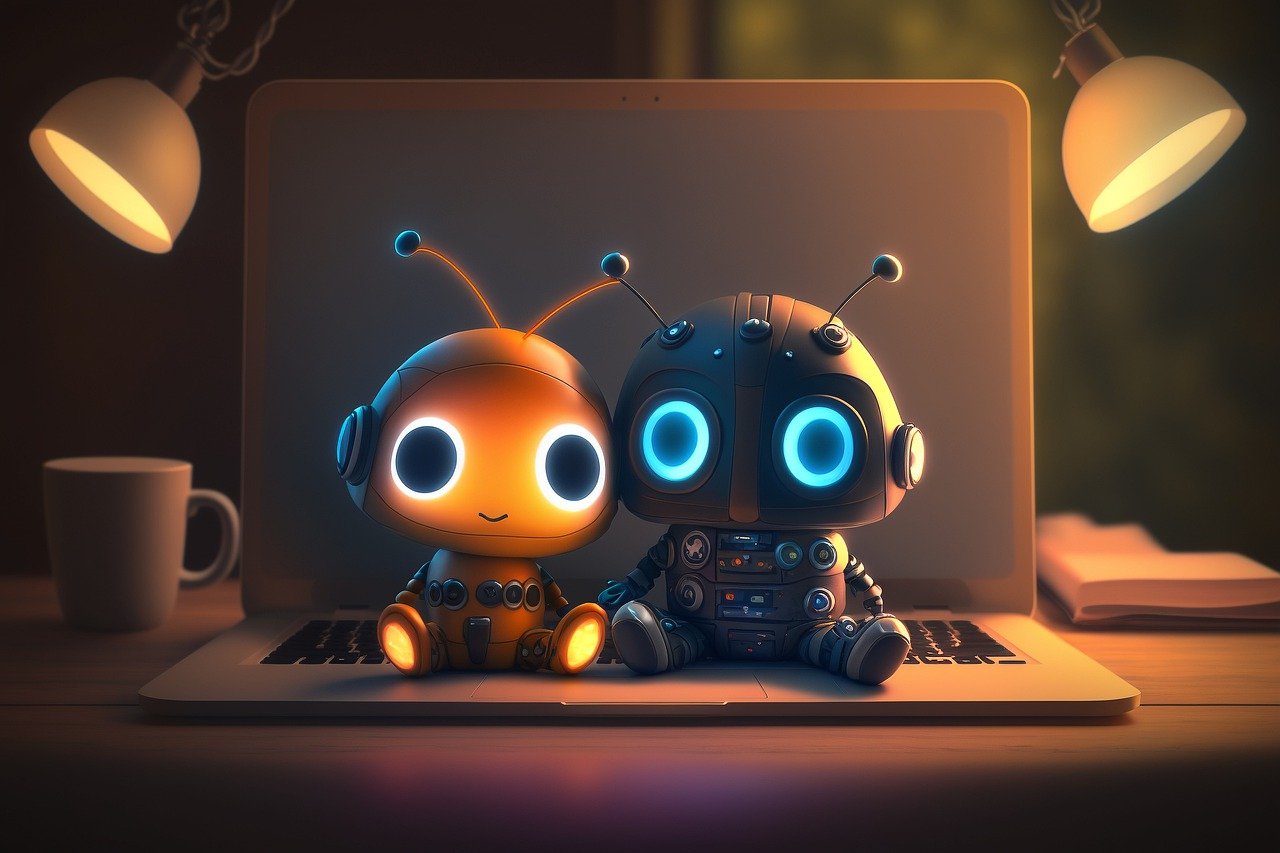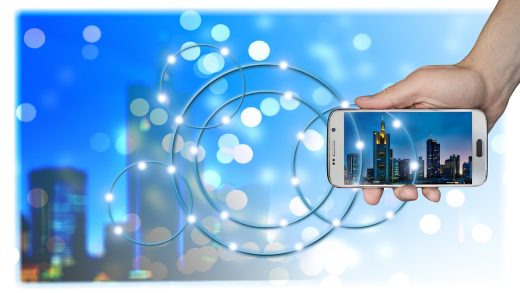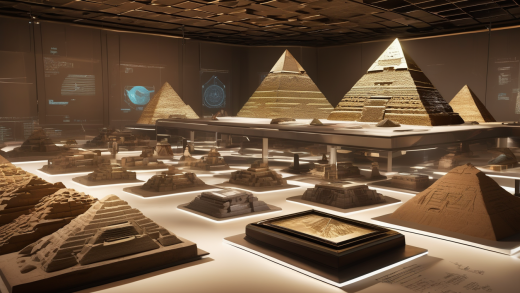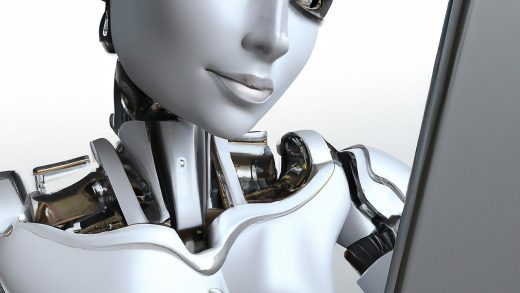The intersection of artificial intelligence and human creativity is a fascinating realm that has sparked countless discussions among artists, technologists, and scholars alike. As we delve into this topic, one cannot help but wonder: Can machines truly understand the essence of creativity? Or are they merely tools that assist in the creative process? This article aims to explore how AI influences creative workflows, its implications for artists, and the evolving relationship between technology and imaginative expression.
AI is not just a buzzword; it has become an integral part of many creative processes. For instance, AI tools can analyse vast amounts of data to identify patterns and trends, thereby enhancing the creative output of artists and writers. Imagine a painter who can instantly generate colour palettes based on current art trends or a musician who can compose melodies by learning from thousands of existing songs. This synergy between AI and creativity is transforming traditional practices, making it easier for creatives to experiment and innovate.
Moreover, the role of AI as a collaborator cannot be overlooked. It is not uncommon for artists to use AI to generate ideas or even complete works. This dynamic relationship can lead to groundbreaking projects that blend human intuition with machine efficiency. Take, for example, the collaboration between renowned artists and AI systems, which has resulted in unique pieces that challenge our understanding of authorship and originality. The fusion of technology and creativity is reshaping the artistic landscape, pushing boundaries that were previously thought unachievable.
However, this integration of AI into the creative sphere does not come without challenges. Ethical considerations surrounding authorship and the potential impact on job security in creative professions are hotly debated topics. As we move forward, it is crucial to address these challenges while embracing the opportunities that AI presents. By doing so, we can ensure that human creativity remains at the forefront of artistic expression, even in an increasingly AI-enhanced world.
In conclusion, the relationship between AI and human creativity is complex and multifaceted. As we explore the future of this partnership, one thing is clear: the creative landscape is evolving, and those who adapt to these changes will thrive. For further reading, you can check out resources on AI in Art and its implications on creativity.
The Role of AI in Creative Processes
In today’s rapidly evolving digital landscape, artificial intelligence (AI) has emerged as a powerful ally in the realm of creativity. No longer just a tool for automation, AI is reshaping the way artists and writers approach their crafts. By integrating AI into creative workflows, individuals can enhance their imaginative processes and explore uncharted territories. Imagine having a brainstorming partner that never tires, always ready to generate ideas or assist in refining your concepts—this is the essence of AI in creative processes.
AI tools are designed to streamline tasks and inspire new ideas, making the creative journey more efficient and enjoyable. For instance, AI algorithms can analyse vast amounts of data to identify trends and patterns, providing artists with insights that might not be immediately apparent. This capability allows creators to focus on what they do best—thinking outside the box—while AI handles the more mundane aspects of their work.
Consider the following benefits of incorporating AI into creative workflows:
- Enhanced Creativity: AI can suggest novel ideas or variations on existing concepts, pushing artists to think beyond their usual boundaries.
- Time-Saving: By automating repetitive tasks, AI frees up valuable time for artists to focus on their creative pursuits.
- Collaboration: AI acts as a partner in the creative process, allowing for a dynamic exchange of ideas between human and machine.
As we delve deeper into the intersection of AI and creativity, it is essential to recognise that this collaboration is not about replacing human talent; rather, it is about augmenting it. The synergy between AI and human creativity can lead to groundbreaking outcomes, as seen in various fields from visual arts to music composition. For more insights on this topic, you can explore this detailed article that discusses the transformative role of AI in the creative industry.

AI as a Collaborator
Artificial Intelligence is not just a tool; it has become a significant collaborator in the creative realm. Imagine having a partner who can brainstorm ideas with you, suggest new angles, and even generate content based on your preferences. This is the reality for many artists and writers today. AI can assist in creating everything from inspiring artwork to compelling narratives, making the creative process both exciting and efficient.
One of the most fascinating aspects of AI as a collaborator is its ability to learn from human input. By analysing vast amounts of data, AI can identify patterns and trends that might escape the human eye. For instance, when working on a project, an artist might input their style preferences into an AI tool, which then generates suggestions that align closely with their unique vision. This not only saves time but also opens up a world of possibilities, enabling artists to explore uncharted territories of creativity.
Moreover, the synergy between human creativity and AI can lead to groundbreaking projects. Consider the collaborative efforts in the fields of visual arts and music composition. Artists like Refik Anadol have harnessed AI to create stunning visual installations that blend technology with artistic expression. In music, composers are using AI to explore new genres, pushing the boundaries of what is considered traditional music. The result? A beautiful fusion of technology and imagination that captivates audiences.
However, collaboration with AI does come with its own set of challenges. Questions about authorship and originality arise, making it vital for artists to navigate this new landscape thoughtfully. To address these concerns, many creatives are establishing guidelines for their collaborations with AI, ensuring that the human touch remains at the forefront of their work.
In conclusion, as we continue to embrace AI as a collaborator, we must remain open to the endless possibilities it presents. By fostering a relationship with AI, artists can enhance their creative processes, resulting in innovative outcomes that were once thought impossible. The future of creativity is not just about humans or machines; it’s about how we can work together to create something truly extraordinary.
Case Studies of AI-Driven Art
As we delve into the fascinating world of AI-driven art, it’s essential to recognise the transformative power that artificial intelligence has brought to the creative process. Numerous artists have begun to experiment with AI, resulting in innovative and thought-provoking works that challenge traditional notions of authorship and creativity. One notable example is the work of Obvious, a collective that made headlines when their AI-generated portrait, “Edmond de Belamy,” was auctioned at Christie’s for an astonishing $432,500. This event sparked discussions about the role of AI in art and whether a machine can truly create masterpieces.
Another compelling case study is the collaboration between musician AIVA and AI technology, where the software composes music that evokes deep emotional responses. AIVA has been used to create soundtracks for films and video games, showcasing how AI can enhance the musical landscape. This collaboration blurs the lines between human creativity and machine learning, raising questions about the future of music composition.
In the realm of visual arts, artist Refik Anadol has made waves with his data-driven installations. By using AI to analyse vast amounts of data, Anadol creates immersive experiences that transform traditional art forms into dynamic, ever-evolving pieces. His work, such as “Melting Memories,” exemplifies how AI can serve as a medium for artistic expression, allowing audiences to engage with art in entirely new ways.
Ultimately, these case studies illustrate that AI is not merely a tool but a collaborative partner in the creative process. As artists continue to explore the potential of AI, we can expect to see even more groundbreaking works that challenge our understanding of art and creativity.
| Artist/Collective | AI Project | Key Outcome |
|---|---|---|
| Obvious | Edmond de Belamy | Auctioned for $432,500 |
| AIVA | Music Composition | Soundtracks for films and games |
| Refik Anadol | Melting Memories | Immersive data-driven installation |
Music Composition and AI
The realm of music composition has been dramatically transformed by the advent of artificial intelligence. Musicians and composers are now leveraging AI technologies to not only enhance their creative processes but also to explore new musical genres and sounds that were previously unimaginable. Imagine having a virtual assistant that can suggest melodies, harmonies, or even entire compositions tailored to your style! This is not science fiction; it’s the reality of modern music creation.
AI-generated music has sparked a revolution in the industry, leading to a fascinating interplay between human creativity and machine learning. For instance, platforms like OpenAI’s MuseNet can compose original pieces in various styles, from classical to pop, by analysing vast datasets of existing music. This capability raises intriguing questions: What does it mean for a piece to be original if it’s generated by an algorithm? Can AI truly understand the emotional nuances of music?
Moreover, collaborations between humans and AI have yielded some remarkable projects. Consider the following examples:
- Dadabots: A duo that uses AI to create continuous music streams, pushing the boundaries of genre.
- Flow Machines: A project that assisted in composing the song “Daddy’s Car,” which mimics the style of The Beatles.
- AIVA: An AI composer that has been recognised for producing soundtracks for films and games.
As we delve deeper into this synergy, it’s crucial to address the ethical implications surrounding AI in music. Who owns the rights to an AI-generated piece? How do we ensure that human artists are not overshadowed by machines? As we navigate this new musical landscape, a balance must be struck to preserve the essence of human creativity while embracing the innovations that AI brings.
In conclusion, the fusion of AI and music composition is not just a trend; it’s a paradigm shift that invites us to rethink our understanding of creativity. As we move forward, the collaboration between human musicians and AI promises to unlock a world of possibilities, enriching the musical tapestry of our time.
Visual Arts and AI Innovations
In the realm of visual arts, the advent of artificial intelligence has sparked a revolution that is reshaping how artists create and interact with their work. From generative art to the application of complex algorithms, AI is not merely a tool; it has become a collaborator, pushing the boundaries of creativity. Artists are now able to explore new dimensions of their craft, producing works that were once deemed impossible. For example, AI algorithms can analyse vast datasets of existing artworks, learning styles and techniques that can then be applied to generate original pieces. This fusion of technology and creativity is akin to giving a painter a palette that constantly evolves, providing them with an infinite array of colours and textures.
However, the integration of AI in visual arts does not come without its challenges. Questions about authorship and originality arise when a machine can create art that rivals human expression. Who truly owns an artwork created by an AI? Is it the programmer, the artist, or the AI itself? These questions are crucial as they highlight the ethical implications of AI in creative fields. As we navigate this new landscape, it is essential for artists to maintain their unique voices while embracing the innovations that AI offers.
To illustrate the impact of AI on visual arts, consider the following table showcasing notable AI-driven art projects:
| Project Name | Artist/Collaborator | Description |
|---|---|---|
| The Next Rembrandt | ING & Tu Delft | An AI-generated painting based on Rembrandt’s works, created using deep learning algorithms. |
| Edmond de Belamy | Obvious | A portrait created by a GAN (Generative Adversarial Network) that sold for $432,500 at auction. |
| DeepDream | A neural network that enhances and modifies images, creating surreal visual interpretations. |
As the dialogue between art and technology continues to evolve, it is vital for artists to embrace these changes, leveraging AI as a partner in their creative journey. By doing so, they not only enhance their artistic capabilities but also contribute to a broader understanding of what art can be in the 21st century. For more insights into this fascinating intersection, you can explore resources like Artsy.
Challenges and Ethical Considerations
As we delve into the intriguing world of AI and its intersection with creativity, it’s essential to address the challenges and ethical considerations that arise. The integration of AI into creative fields is not without its pitfalls. One significant concern revolves around authorship. When AI generates art or music, who owns the rights? Is it the programmer, the artist who used the AI, or the AI itself? These questions challenge our traditional notions of creativity and ownership.
Moreover, the fear of job displacement looms large. Many artists worry that as AI becomes more capable, it could replace human creativity altogether. However, it’s vital to consider that AI should be viewed as a tool rather than a competitor. It can enhance the creative process, but it cannot replicate the unique human experience and emotional depth that artists bring to their work.
Another pressing issue is the potential for bias in AI-generated content. If the data fed into AI systems is biased, the output will inevitably reflect those biases, leading to a lack of diversity in creative expressions. For instance, AI trained primarily on Western art may overlook or misrepresent non-Western cultures, which raises questions about cultural appropriation and representation.
To illustrate these challenges, consider the following table summarising key ethical concerns:
| Concern | Description |
|---|---|
| Authorship | Who owns the rights to AI-generated works? |
| Job Displacement | Will AI replace human artists? |
| Bias | Is AI perpetuating existing biases in creative fields? |
As we navigate this rapidly evolving landscape, it’s crucial for creatives to engage in discussions about these ethical implications. By fostering a collaborative dialogue, we can ensure that human creativity remains at the forefront, even as we embrace the potential of AI. For further reading on the ethical implications of AI, check out this article.
The Future of Human Creativity with AI
The future of human creativity is poised to undergo a remarkable transformation, largely driven by the advancements in artificial intelligence. As we stand on the brink of this evolution, it’s fascinating to consider how AI will not only shape the way we create but also redefine our understanding of creativity itself. Imagine a world where artists and machines collaborate seamlessly, pushing the boundaries of what is possible in art, music, and literature.
One of the most exciting prospects is the emergence of new forms of expression that blend human intuition with AI’s analytical prowess. For instance, AI can analyse vast datasets to identify trends and suggest innovative ideas that an artist may not have considered. This synergy can lead to groundbreaking works that challenge our perceptions and inspire audiences in unprecedented ways. As we explore this potential, we must also acknowledge the importance of maintaining a balance between human creativity and technological influence.
To prepare for this AI-influenced creative landscape, artists and creatives can adopt several strategies:
- Embrace collaboration with AI tools to enhance their creative processes.
- Engage in continuous learning about emerging technologies and their applications in art.
- Foster a community of creators who share insights and experiences regarding AI integration.
As AI continues to evolve, we can expect to see an array of emerging trends that will reshape artistic practices. For example, generative art, where algorithms create unique pieces based on specific parameters set by the artist, is becoming increasingly popular. This not only expands the creative toolkit available to artists but also challenges traditional notions of authorship and originality.
In conclusion, the future of human creativity with AI is a thrilling frontier. While there are challenges to navigate, the potential for innovation and new forms of artistic expression is immense. By embracing AI as a partner rather than a competitor, we can ensure that the essence of human creativity remains vibrant and relevant in this new era.
Emerging Trends in AI-Enhanced Creativity
AI is increasingly integrated into creative workflows, assisting artists and writers. This section discusses how AI tools enhance creativity, streamline tasks, and inspire new ideas, transforming traditional creative practices.
AI can serve as a creative partner, providing suggestions and generating content. This section explores the dynamics of human-AI collaboration, highlighting successful projects and the potential for innovative outcomes when humans and machines work together.
Numerous artists have embraced AI to produce unique works. This subsection examines notable case studies where AI played a pivotal role in the artistic process, showcasing the fusion of technology and creativity.
AI’s influence on music composition is profound, enabling musicians to explore new genres and sounds. This segment delves into AI-generated music and its reception within the music community, highlighting key examples.
The visual arts have seen significant advancements due to AI technologies. This part discusses the impact of AI on visual art creation, including generative art and the use of algorithms in traditional art forms.
The integration of AI in creative fields raises ethical questions and challenges. This section addresses concerns about authorship, originality, and the potential impact on human creativity and job security in artistic professions.
As AI continues to evolve, its role in shaping human creativity will expand. This section speculates on future trends, the potential for new forms of expression, and how artists might adapt to an AI-enhanced creative landscape.
As we witness the rapid evolution of technology, AI-enhanced creativity is becoming a vital part of the artistic landscape. Artists are now leveraging AI tools to push the boundaries of their imagination, leading to the emergence of several exciting trends. For instance, collaborative art projects between humans and AI are gaining traction, where artists use AI algorithms to generate initial concepts, which they then refine and personalise. This collaboration not only enhances creativity but also sparks innovative ideas that might not have emerged through traditional methods.
Moreover, the rise of generative design has transformed fields like architecture and product design. Designers are using AI to create multiple design variations based on specific parameters, allowing for a level of exploration and creativity that was previously unimaginable. This trend exemplifies how AI can act as a catalyst for creativity, rather than a replacement for it.
In the music industry, AI is being utilised to compose tracks that blend various genres, creating a unique soundscape that resonates with diverse audiences. The ability of AI to analyse vast amounts of data enables it to identify patterns and trends, thus assisting musicians in crafting original compositions that appeal to contemporary listeners.
Furthermore, we are seeing a surge in interactive art installations, where AI reacts to audience input in real-time, making the viewer an integral part of the creative process. This not only captivates audiences but also fosters a deeper connection between the artwork and its observers.
As these trends continue to evolve, it is crucial for artists to remain adaptable and open-minded. Embracing AI tools can lead to unprecedented opportunities for creative expression, ultimately redefining the boundaries of art itself.
Preparing for an AI-Influenced Creative Landscape
As we stand on the brink of a new era in creativity, it’s essential for artists and creatives to embrace AI as a tool rather than a threat. The integration of artificial intelligence into the creative process is not just about replacing human input; it’s about enhancing creativity and opening doors to new possibilities. To thrive in this AI-influenced landscape, artists must adopt a mindset that welcomes collaboration with technology.
One effective strategy is to foster collaboration between human intuition and AI algorithms. By doing so, artists can leverage AI to generate ideas, refine their work, and explore uncharted territories in their creative pursuits. For instance, AI can analyse trends in music or visual arts, providing insights that help artists stay relevant and innovative. Here are some ways to prepare for this shift:
- Education and Training: Familiarise yourself with AI tools and platforms that can assist in your creative process.
- Experimentation: Don’t hesitate to experiment with AI-generated content. It might surprise you how it can inspire your work.
- Networking: Connect with other creatives who are exploring AI. Sharing experiences can lead to innovative collaborations.
Moreover, it’s crucial to maintain a sense of authenticity in your work. While AI can generate ideas, the essence of creativity lies in human emotion and experience. As we navigate this new landscape, artists should continually ask themselves how they can incorporate their unique perspectives into AI collaborations.
In conclusion, preparing for an AI-influenced creative landscape involves a balance of innovation and tradition. By embracing AI as a partner, artists can not only enhance their creative processes but also ensure that their work remains deeply personal and impactful. The future of creativity is not about choosing between human and machine; it’s about finding harmony between the two.
| Strategy | Description |
|---|---|
| Education and Training | Learn about various AI tools that can assist in your creative work. |
| Experimentation | Try out AI-generated content to inspire and expand your creativity. |
| Networking | Engage with other creatives to share insights and collaborate on projects. |
For more insights on the intersection of AI and creativity, check out this article that delves deeper into the topic.
Frequently Asked Questions
- How does AI enhance human creativity?
AI enhances human creativity by providing innovative tools that assist in brainstorming, generating ideas, and automating repetitive tasks. This allows artists and creators to focus more on the imaginative aspects of their work, while AI handles the technical details.
- Can AI replace human artists?
While AI can produce art and music, it cannot fully replace human artists. Creativity is deeply rooted in human experience, emotions, and cultural context, which AI lacks. Instead, AI serves as a collaborator, offering new possibilities and perspectives.
- What are the ethical concerns surrounding AI in creativity?
There are several ethical concerns, including issues of authorship and originality. As AI generates content, questions arise about who owns the rights to the work. Additionally, there are worries about AI’s impact on job security in creative professions.
- How can artists prepare for an AI-influenced creative landscape?
Artists can prepare by embracing AI tools, learning to collaborate with these technologies, and staying informed about emerging trends. By integrating AI into their creative processes, they can enhance their work while ensuring that their unique human touch remains central.
- What future trends should we expect in AI and creativity?
Future trends may include more sophisticated AI tools that enhance collaboration, new forms of artistic expression, and innovative applications across various creative disciplines. As technology evolves, the boundaries of creativity will continue to expand.


